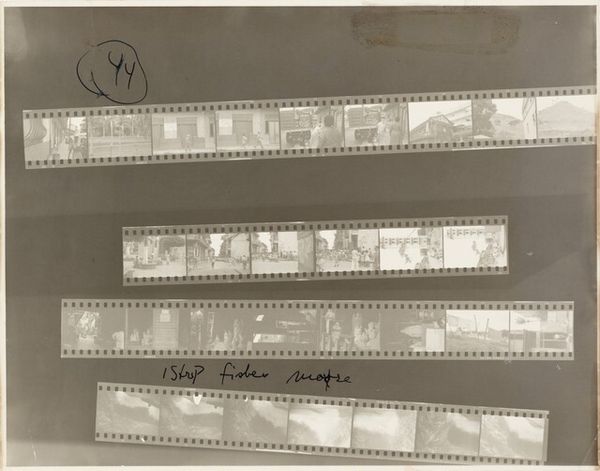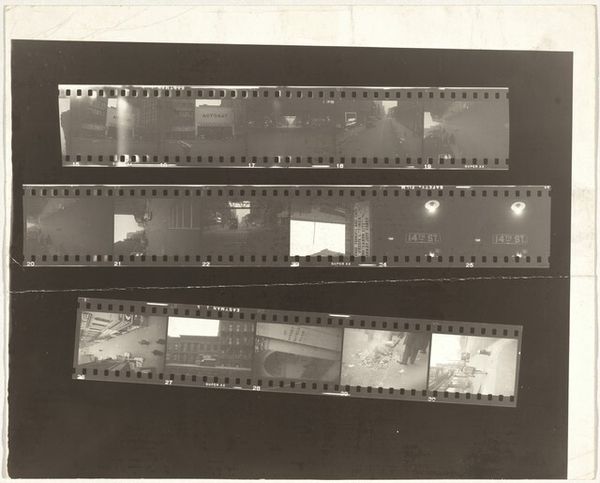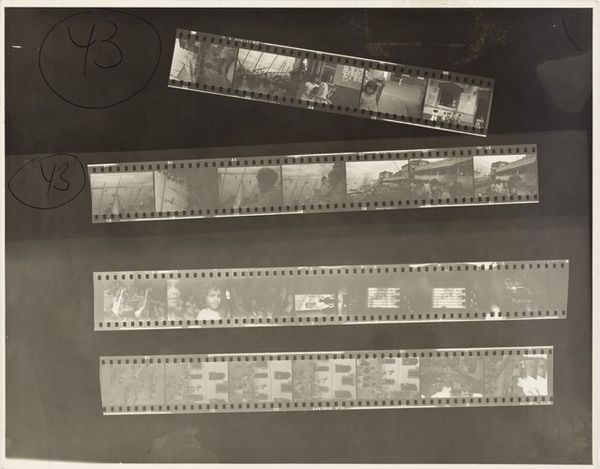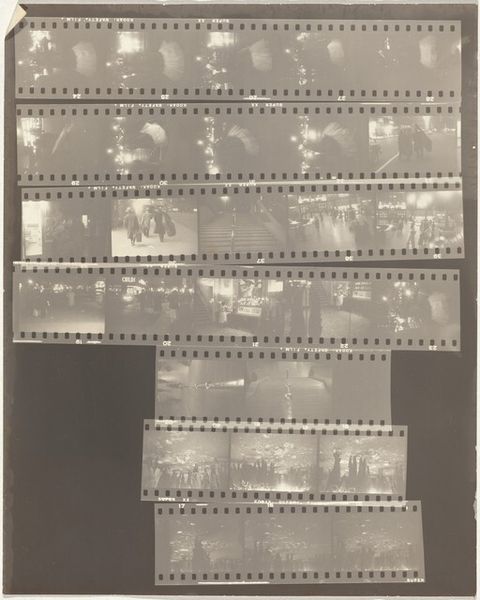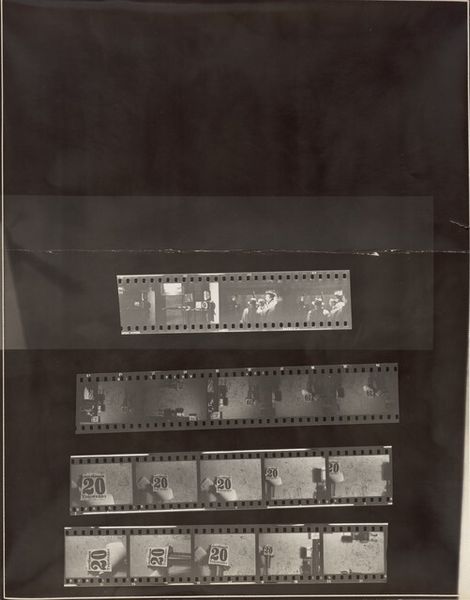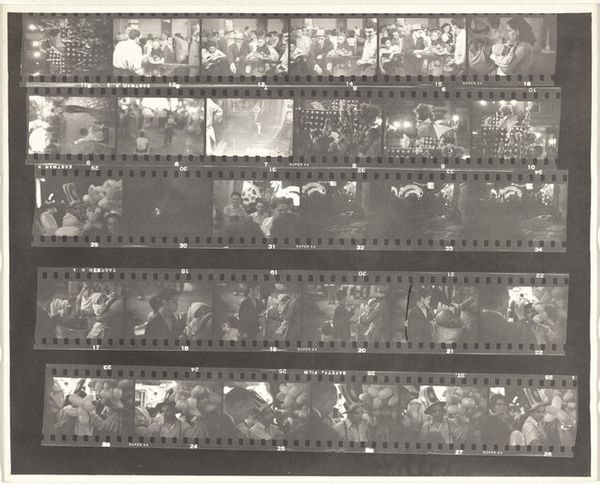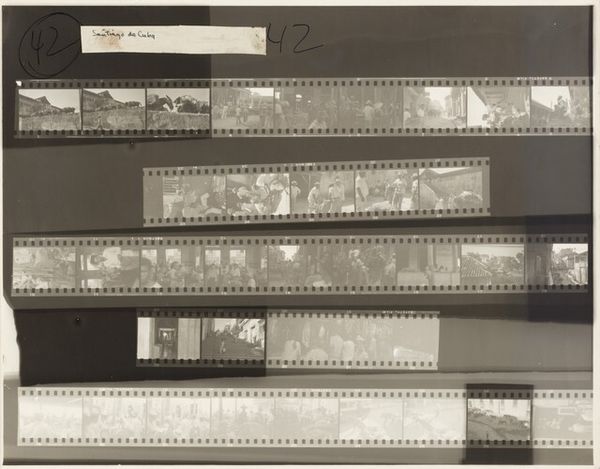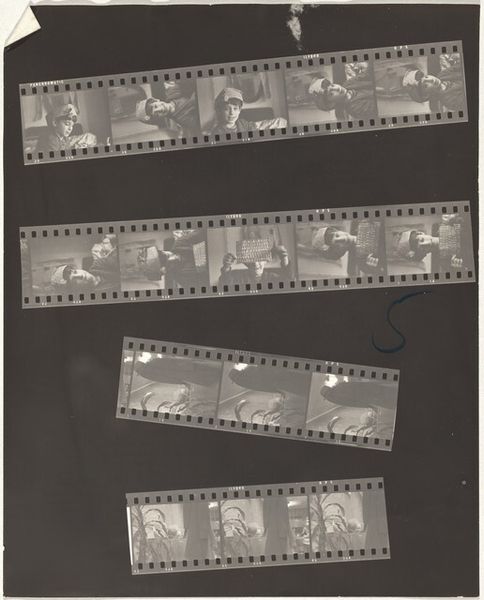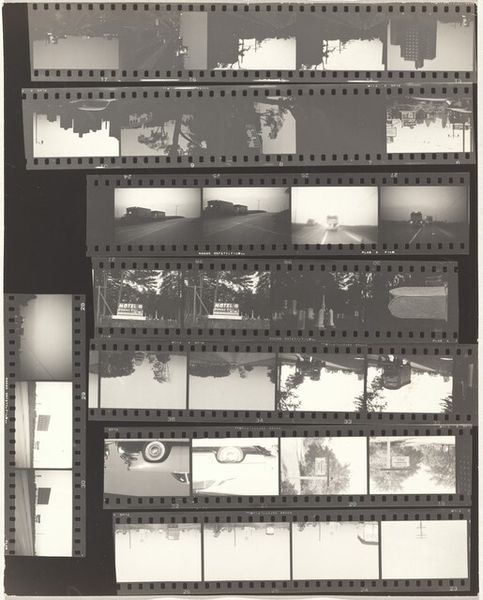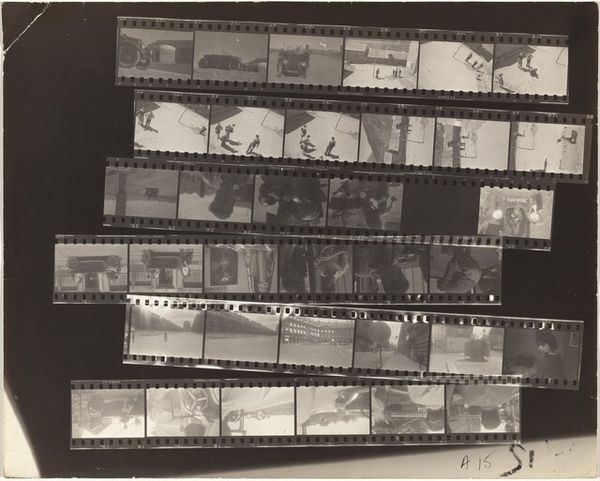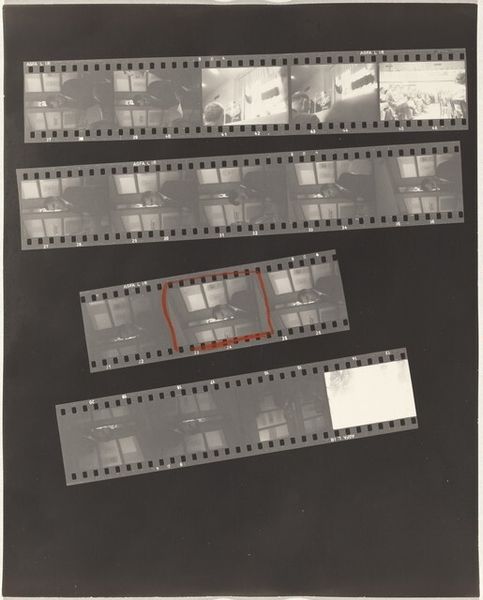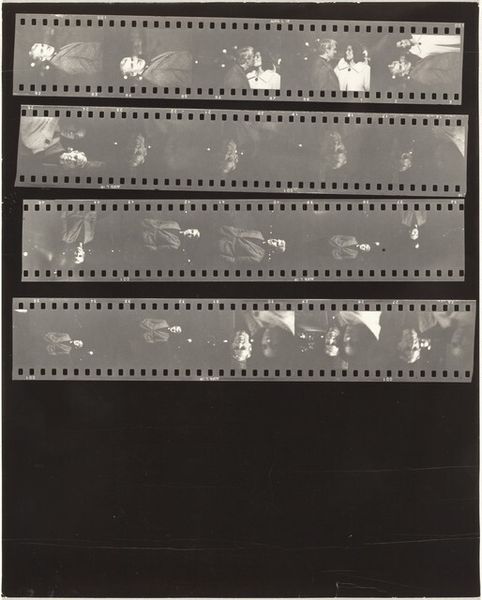
print, photography, gelatin-silver-print
#
abstract-expressionism
# print
#
landscape
#
street-photography
#
photography
#
gelatin-silver-print
#
modernism
Dimensions: overall: 20.2 x 25.2 cm (7 15/16 x 9 15/16 in.)
Copyright: National Gallery of Art: CC0 1.0
Curator: Robert Frank's gelatin silver print, “11th Street Story C” from 1951, is quite striking. The format itself is very interesting—it presents as strips of negatives mounted on board. Editor: My first impression is a sense of fragmented narratives and ghostly impressions of figures in space. The light and shadow relationships evoke a melancholic mood and create this almost dreamlike feel. Curator: Exactly. The symbolism is rich, even just in the choice of printing these strips rather than selecting one definitive image. What do you think that implies? Editor: Well, materially speaking, this exposes the normally unseen processes of the darkroom, as if the editing room has itself become the art piece. Frank isn't just interested in the decisive moment; he wants us to consider the means of production, and even those choices discarded. Curator: Perhaps this also is a comment on time and memory. Each strip contains a sequence, echoing the fleeting nature of experience. Think about that as well, in relation to the medium of photography itself. Editor: It begs us to ask what story Frank is trying to convey through this layout, and how we, the viewer, become co-authors of meaning. Is it social commentary? A slice of urban life? It almost looks like he cut apart entire newspapers of life unfolding onto a flat plane. Curator: In its original exhibition, the artist offered a poignant statement. Robert Frank, being Swiss born, presented his view of 1950s America as an outsider looking in, seeing things locals wouldn't. This resonates in its visual style, and how he intentionally challenged the norms of conventional photojournalism. It became an honest cultural critique and testament to personal subjectivity in art. Editor: The visible sprockets of the film themselves become design elements, markers of time, sequence, a literal framework around fleeting moments in an individual and collective consciousness, if you will. This really reframes the act of photography itself. Curator: Ultimately, Frank reminds us that images are never neutral and he certainly brings new emotional registers. Editor: I find the artistic labor involved here to be just as profound as the act of photographic documentation itself.
Comments
No comments
Be the first to comment and join the conversation on the ultimate creative platform.
